It's been couple of years since the Save the Bees Design Challenge but that challenge inspired me to support native pollinators in our area (mason bees and leafcutter bees).
The Finisher's Prize was a Insect Hotel that I put out in the yard when I received it in July in hopes of getting leafcutter bees to nest. Unfortunately, I was unsuccessful getting any types of bees or other insects to populate the hotel.
Insect Hotel 2023
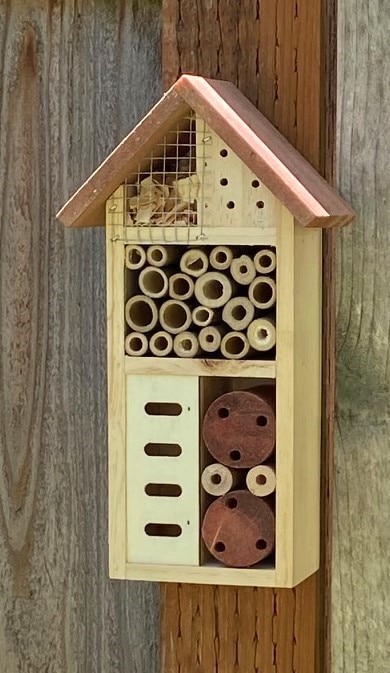
The next year I tried with a different Mason Bee House that I put out in early March. I had done some research and Mason Bees like nesting tubes that are 8 mm in diameter and 150 mm long. The Insect Hotel had shorter 100 mm tubes and many were larger and smaller than 8 mm in diameter. Leafcutters are smaller bees but they also line their nests with leaf fragments so the 8 mm tubes should work for them also. A friend gave me 20 Mason Bee cocoons as a starter so I put them in a paper box attached under the bee house. Had success with bees emerging from 16 of the cocoons.
Had less success with getting the bees to nest and only got 4 of the tubes filled. I took the picture below about midway through the spring season and only had 2 tubes at that point. I think part of my problem getting Mason Bees to nest was that I did not provide them with a nearby source of wet clay-rich mud. I'll do that this year. And I again had no success with Leafcutters nesting later in the summer even though I pretty sure I saw some in the garden.
Mason Bee House 2024
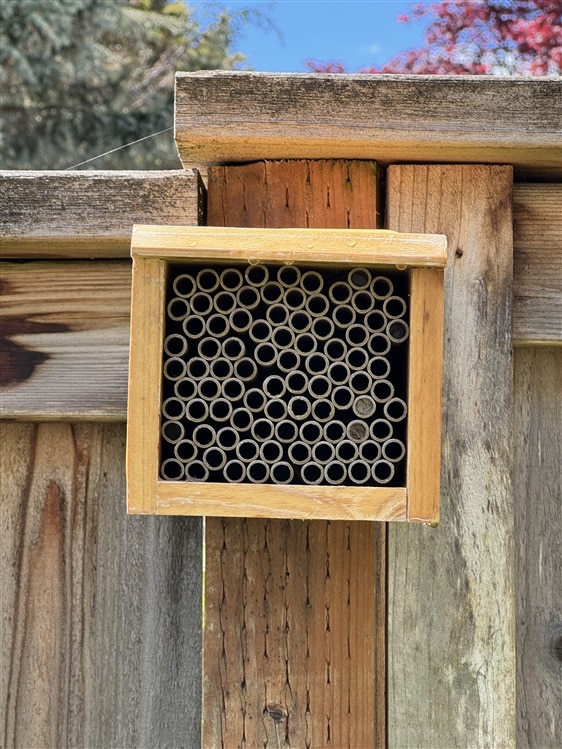
Mason Bee Cocoons
Here are some of the 2 dozen cocoons that I harvested from the tubes in the fall. The larger ones are the females and the little round disks are the spacers between the cocoons in the tube.
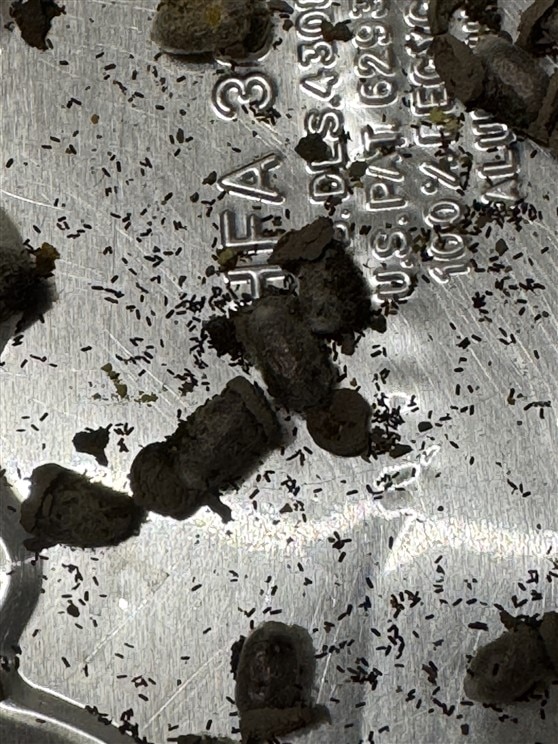
I put out a different Mason Bee house this year. I have white paper inserts in some of the tubes to reduce the diameter slightly to hopefully make them more attractive to Leafcutters. I also added a cocoon incubator that I built. The incubator uses a thin wall 1 1/2" PVC tube that I cut to length and added 3D printed endcaps. Last year the paper box that I put the cocoons in barely survived the rain.
Mason Bee House 2025
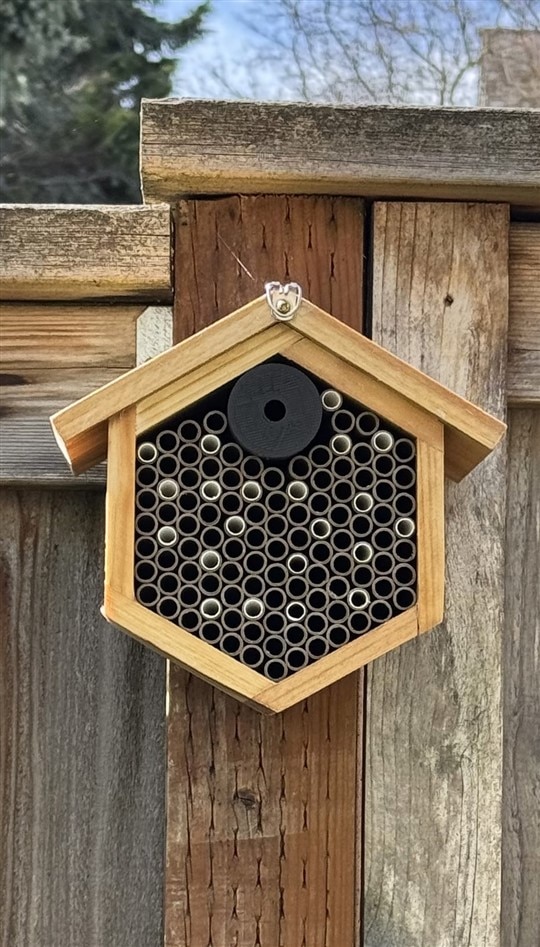
It has been a cold and wet end of winter and start of spring so I've delayed putting out the cocoons. You're supposed to wait until the daytime temperature is consistently above 13 C. Finally had a couple of sunny warmer days at the beginning of this week. I put the cocoons out on Monday and by Wednesday we had bees buzzing around the Camelia bush in the backyard. The bees were so active that I couldn't manage to get a picture of one on a flower, so I did the next best thing and took a video of them buzzing around. The video has been slowed down to 0.1 x speed.
Unfortunately the Camelias in our yard are a couple of weeks past their peak bloom and the Hellebores also. The Daffodils are in full bloom but the bees don't seem attracted to them. We have a couple of Azalea bushes just starting blossom and a Lilac tree that's full of buds, so hopefully we can keep the bees happy. The solitary bees tend to have a very small foraging range (~100 m) and will nest elsewhere if there isn't a sufficient source of food and clay-rich mud for constructing their nests.
Azalea
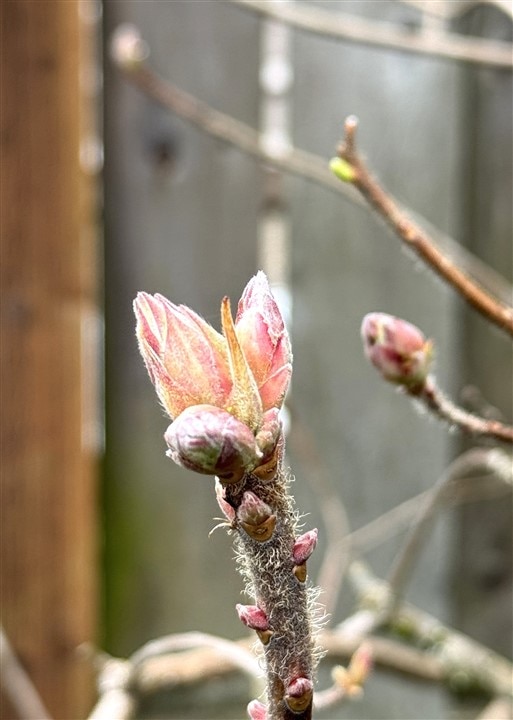
Clay-rich Mud
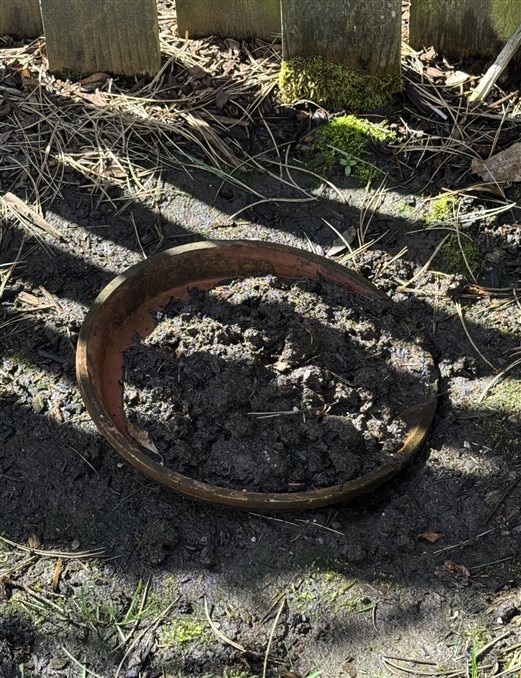
My wife got our yard certified in the Backyard Habitat program and we have been using more native plants and wildlife friendly gardening practices. We did "leave the leaves" this year to enhance bumblebee nesting and while the yard looked like a mess I've noticed more bumblebees this spring. We just started planting Trilliums last year which are bee friendly but ours have not started to bloom yet. We noticed lots of them this week when walking the dogs in a nearby wilderness park, so it's possible that ours won't bloom this year.
Trillium
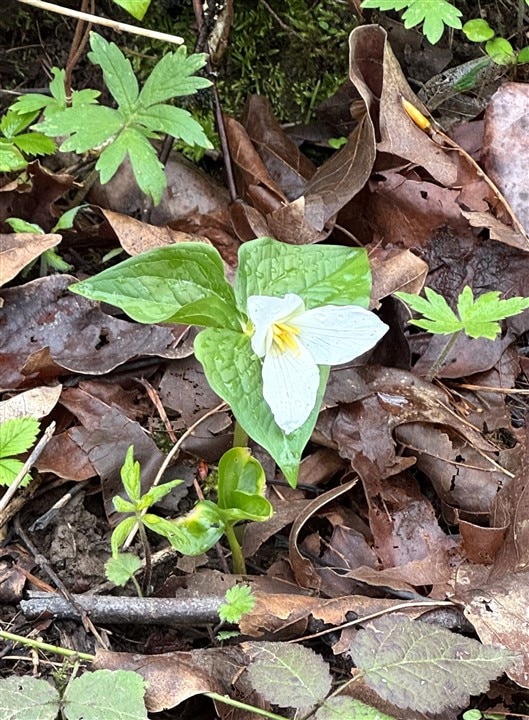
I'd like to put up a camera so that I can record nesting activity but don't know if I'll have time to get that done.
